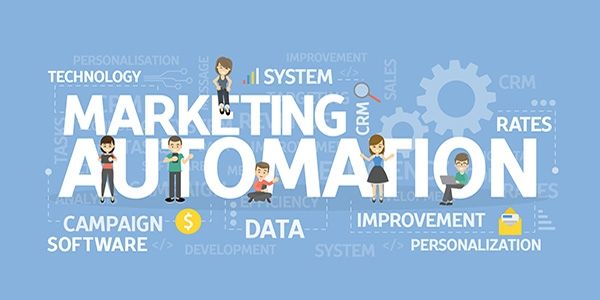How Marketing Automation Boosts Project Management Efficiency
Automation is a keyword that has risen to popularity because of its many useful applications.
In marketing, automation refers to the method of streamlining different tasks to produce efficiency. But how does it work and why does it continue to be popular?
Trends in Marketing Automation
Email marketing automation is one of the leading and most effective ways of using automation for marketing campaigns. With a return on investment (ROI) of about 43:1 based on research done by Campaign Monitor and Omnisend, it’s no wonder that marketing automation has become a must-have for marketers.
Moreover, email marketing automation also positively impacts project management by reducing tasks needed to be performed. This has been a recurring theme of marketing automation. The aim is to reduce menial tasks by allowing an automated system to do the dirty work which allows more time for planning and strategizing new campaigns.
Marketing automation has also allowed for real-time viewing of sales and other important statistics. Reports can now be generated through marketing automation as long as there is available data. The best part is that automation also allows for automatic collection and tracking of whatever data is needed. Less time is spent waiting for data to be collated and more time can be made for strategic planning and analysis of the available data.
Marketing Automation for Project Management
Aside from making life easier, there are other benefits of automation for marketing. One major purpose of marketing automation is to streamline project management. But what is the benefit of using marketing automation over other management strategies?
Let’s break down what these benefits are and how can it be applied to project management in order to produce the intended results.
1. Strategic Planning and Real-time Implementation
The most time-consuming task is the collection of data for planning how the project will proceed and what steps will be necessary for its success. This may take weeks and even months just to collect the information. With marketing automation, collection is made real-time.
When real-time information is available, plans can easily be made and changed to match whatever is the result. As a result, planning and implementation cycles become a lot shorter.
You can even plan strategically based on actual sales instead of customer perception index and market estimations. That also allows unsuccessful strategies to be modified as early as possible.
Both small and large businesses benefit from real-time information because it allows them to adapt to the market and find their own niche where they could maximize revenue and minimize costs. Even sudden changes in the market won’t be as disastrous as it used to be since information is collected in real-time.
[widget id=”custom_html-68″]
2. Targeting and Lead Scoring
Marketing automation also simplifies tasks related to the expansion of a business towards new markets. We’re talking about targeting new markets and using lead scoring which can be aided by marketing automation. Instead of real-time information, the purpose of using automation is to be able to handle different sets of data at once to create an overview of the market’s readiness for the product. This is also called as “lead scoring”.
The use of marketing automation for lead scoring allows for a wider coverage to be handled easily. Automation also collects more accurate data without consuming too much time. Instead of manually collecting data, the available time could now be spent for analysing opportunities and creating marketing campaigns. The use of automation definitely is an upgrade in this case because of how it streamlines the whole process.
While larger companies seem like the biggest beneficiary of such technology, there is actually a lot of benefit granted for smaller businesses since they’ll be able to perform tasks that require a bunch of teams to previously complete. By spending for marketing automation, small businesses have acquired a comparative advantage that would usually require paying for a few regular employees glued on the task.
3. Team Integration
Streamlining project management is also another advantage and benefit of market automation. By allowing different sets of information to be collected and handled automatically, the different teams are freed from menial tasks and are able to collaborate towards planning and implementing strategies and campaigns.
The integration happens through the automation’s capacity to generate reports instantly. Different sets of data can be cross-referenced with each other to produce results that can help departments decide. There is no longer the need to send a long paper trail of documents between and among departments. The automation does the work for everyone.
What’s even better is that the system can also be automated to send the generated reports to a list of emails. Updates can be made at any chosen interval, whether it is daily, weekly, or monthly. All that needs to be done is to make sense of the available reports and use the data to come up with clever strategies that can bring in sales and revenue.
Future Impact on Smaller Businesses
The biggest winners are those who belong to a small business, whether it’s a personal online store or a recently-started business. Marketing automation may continue to develop and be able to do all the simple work done by employees in companies. What’s left is for the business owners to do what automation cannot: to create plans and be creative in developing campaigns.
Conclusion
Marketing automation is expected to remain popular because of the efficiency it brings into businesses, regardless of size. Its strength is that it could do the menial tasks all by itself and do it with less time required compared to doing these tasks manually.
Its added value is without a doubt able to bring accessibility and comfort to marketers since the amount of repetitive tasks is reduced. The flexibility that marketing automation gives to project management will certainly make it’s a must-have for several companies looking to cut costs and reduce the time spent on different projects.
Would marketing automation work for you? It’s definitely a yes. These are just some of the ways on how marketing automation is currently being used. Over time, other tasks will soon incorporate this technology to create productivity and efficiency.





